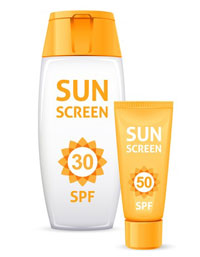
In 2002, FDA first issued regulations on providing the process – The Time and Extent Application (TEA), to create a new Over the Counter (OTC) drug monograph, or amend an existing monograph that an active ingredient or condition is Generally Recognized as Safe and Effective (GRASE). The steps are two fold:
- First, the drug must be determined to be eligible
- Second, the drug must be determined to be GRASE
The Sunscreen Innovation Act (SIA) enacted in 2014, amended the FDC Act to provide specific deadlines for FDA’s TEAs for sunscreen active ingredients. In addition to these deadlines, the Sunscreen Innovation Act also required that the FDA publish Draft Guidelines on the implementation and compliance of approving new sunscreens. A few days before the deadline in November 2015, drafts were issued for the following guidelines for sunscreens.
- Format of submissions by the sponsor to support GRASE Status – Evidence of safety and efficacy that the sponsor has submitted must be publicly available, and not marked as confidential.
- Withdrawal of a Sunscreen TEA – The draft describes the consequences of withdrawal in various stages of the Sunscreen Innovation Act FDA will consider a TEA withdrawn if a sponsor fails to respond within 90 days for a request for a data or update by the FDA.
- Requesting an Advisory committee review – This guidance clarifies what conditions may merit an advisory committee review and the process that FDA uses to warrant such a review. Importantly, there is a limit in the number of advisory committee meetings that the FDA must convene per sunscreen TEA per year set by the Sunscreen Innovation Act.
- Safety and Effectiveness data to determine whether a sunscreen active ingredient is GRASE – This guidance outlines the various studies that may be needed to support safety and effectiveness of sunscreens. With respect to safety, the FDA wishes to address dermal irritation tests, photo-safety (exposure to sun) reactions, and adverse event – and skin absorption studies. Where there are more serious concerns (e.g. carcinogenicity), then additional data (animal) may be required. Lastly, there is a potential for pediatric specific studies depending on the characteristic of an ingredient. With respect to efficacy tests, the FDA’s regulation on SPF testing of monograph products) (21 CFR 201.327) should be done. Overall, according to FDA the proposed studies are not novel and are consistent with FDA’s standard data requirements for approval for topical drug products for chronic use.
The above mentioned guidance’s were open for comment until January 22, 2016. An interesting point raised is FDA’s discussion on possible requirements for final formulation testing. At the present time, FDA has not yet indicated if final formulation testing will be required; however, they are looking to the industry to provide a scientifically persuasive rationale as to why such testing would not be necessary OR alternative approaches to the one described in the draft guidance. Lastly, an impact on an increase in the availability of sunscreen ingredients remains to be seen as a result of the Sunscreen Innovation Act.
dicentra can assist in reviewing sunscreen products & ingredients for safety and efficacy, and can provide guidance on active sunscreen ingredients for the US market. We can be reached at 1-866-647-3279 or info@dicentra.com